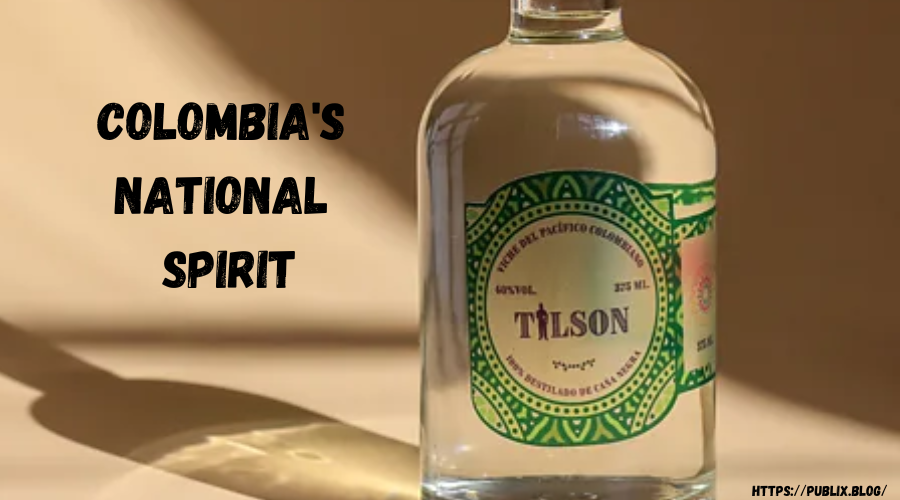Alcohol is a beloved anise-flavored spirit. It holds a place of pride in the world of culture. A unique and slightly fiery flavor makes it stand out. It has a deep history rooted in the region’s traditions. It is often enjoyed during celebrations, family gatherings, and community events. This guide dives deep into the world of aguardiente. It explores its origins, types, and the culture surrounding it. It especially focuses on varieties like antioqueño, Amarillo, and colombiano. If you’re curious about the intriguing blend of history, and culture, it represents the flavor for you. You can enjoy this iconic drink for the first time or celebrate your Colombian heritage with its taste of tradition.
What is Aguardiente?
The word which translates to firewater, is a distilled alcoholic beverage. Typically it is made from sugar cane and flavored with anise. Its distinct anise flavor gives it a mildly spicy taste. It has become a trademark of this iconic Colombian spirit. It is often referred to as aguardiente colombiano. It is widely produced and enjoyed throughout Colombia. There is a distinct flavor associated with each region. It is its history and the pride Colombians take in making and drinking it. While its varieties can vary, the traditional essence remains a strong, aromatic spirit. It is more than just a drink or a cultural staple.
Story of Colombia’s National Spirit
Spanish colonial times in Latin America are the main origins of this drink. It was Spanish settlers who introduced distillation techniques. They adapted to local ingredients like sugar cane. In Colombia, it evolved with a unique Colombian identity. In regions like Antioquia, where aguardiente antioqueño emerged as a cherished local variation. It became a symbol of local pride over time. Today, it represents a connection to Colombia’s rich heritage. The history of aguardiente is one of tradition and cultural resilience. Its continued popularity shows the spirit’s timeless appeal. It represents the pride and culture of Colombians. This spicy drink remains an important part of Colombian life due to its anise flavor and rich history.
What Makes Aguardiente Unique?
Its unique flavor and aroma are the result of a few essential ingredients. The major ingredients are sugar cane and anise. There are traditional varieties, such as antioqueno. They combine distilled sugarcane alcohol with natural aniseed to give it a smooth yet slightly spicy taste. Some versions, like aguardiente Amarillo, have added herbs or flavoring agents to enhance the profile. The sugarcane provides a natural sweetness. This anise delivers a distinct licorice-like flavor. Modern health-conscious versions include sugar-free aguardient. They offer a lower-calorie option while retaining the signature taste. They make it appealing to a broader audience.
Distillation Process of Aguardiente
Its flavor and quality are greatly influenced by the distillation process. Alcohol is produced from sugar cane by fermenting it first. A distillation process removes impurities and concentrates flavors. Spirits are created by different methods in traditional distilleries. These are such as aguardiente antioqueño and other local varieties. Each distillery carefully controls factors like temperature and distillation time to achieve a consistent flavor profile. Finally, anise is added to give aguardiente amarillo its characteristic kick. It balances sweetness with a rich and spicy taste. It makes this colombiano stand out among other anise-flavored liquors.
What is the Best Aguardiente in Colombia?
Colombia offers various drink varieties, each with its distinct flavor and personality. The most well-known is aguardiente antioqueño. It originates from the Antioquia region. It has a robust anise flavor and slightly lower alcohol content. Another popular type of this drink is Amarillo. It features a vibrant color and a more pronounced herbal taste. In addition to it, other regions in Colombia produce their unique blends. They have local ingredients that reflect regional culture and tradition. These varieties show the versatility of the drink. It has versatility from smooth and mild to intensely flavored. They allow it to cater to diverse tastes.
Icon of Colombian Spirit
Among all these varieties, this antioqueño stands out as the national icon of Colombia. It is produced in the Antioquia region. This type has a subtle sweetness balanced with the traditional anise flavor. It makes aguardiente so unique. It is especially popular during festivals, family gatherings, and other celebrations. They can be enjoyed straight, often accompanied by traditional Colombian food. The significance of this aguardiente colombiano goes beyond just its taste. This is a symbol of pride and identity for Colombians. It is enjoyed in both casual and formal settings. It is often a first choice when Colombians toast to their culture and heritage.
How to Drink Aguardiente?
The taste of aguardiente is not everything in Colombia. A rich social history is woven into the fabric of the country. Traditionally, aguardiente antioqueño is enjoyed neat and served chilled. It softens the strong anise flavor and enhances its smoothness. In social settings, it is usually shared among friends. It takes a small shot, often accompanied by a toast or cheers. It is popular at lively gatherings where music, dancing, and food complement the spirit’s bold taste. For those who prefer mixing, it can also be added to cocktails, though Colombians usually favor it straight to savor its distinct flavor.
Is It Good for Health?
To enjoy it safely, as with any alcoholic beverage, moderation is essential. It typically contains between 24 and 29 percent alcohol. Despite being less potent than many other spirits, it is still potent enough to be used with caution. Health-conscious drinkers can opt for sugar-free varieties, such as sugar-free aguardiente colombiano. The aguardiente antioqueno provides the signature anise taste with fewer calories. The unique properties of anise may also aid digestion in small amounts, but it’s always best to enjoy it mindfully, especially given its strong, warming effect. Sugar-free Colombian drink offers a lighter option for those who are concerned about their sugar intake. The drink family has gone beyond the traditional varieties to include sugar-free varieties, while still staying true to its heritage.




